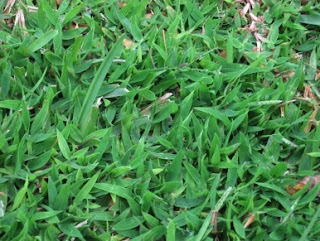Crab grass has a slightly different color than normal grass, which makes it stand out in a perfectly manicured lawn and makes it look unkempt. What's worst is when crab grass patches turn brown, totally destroying the look of your garden or lawn. Some gardeners may tell you that it is almost impossible to get rid of crab grass entirely, but there are actually a few ways that are guaranteed to eliminate it from your garden.
During the winter or colder months, crab grass dies on its own. It falls with the first frost, but can grow back during the spring from seeds of the previous patches. As such, you must do everything to prevent crab grass seeds from getting stored in the soil, as they grow quickly once spring comes.
Below are a few ways that you can control crab grass growth in your lawn or garden. One main thing you have to know is that crab grass dislikes healthy soil, so if you keep your lawn or garden healthy, it will be hard for crab grass to grow. Another important thing is that you need to act quickly—once you see a patch of crab grass, remove it as soon as possible to prevent it from spreading.
Beauty Is Only Soil Deep
As with other weeds, the primary way to get rid of crab grass is to prevent it from growing at all. You can do this by maintaining a regularly cared-for lawn or garden. If your garden or lawn is beautifully manicured, it means that it is healthy. To manicure your garden or lawn takes time and effort, but it is not without reward. If you make sure that your normal grass patches are thick enough to cover your yard, the crab grass will not have room to grow.
Without sunlight, crab grass seedlings aren't able to take root. As such, it is wise to keep your grass growth between two and one half to three inches high. Properly mow your lawn, and keep the length of your garden grass at a constant to maintain a healthy lawn or garden.
Persistence Is Virtue
Once you see a patch of crab grass, try to remove it as soon as possible. If you leave even the smallest of crab grass patches unattended, they will quickly turn into a bunch of flowers with spiked seeds sprouting from the center. This flower bunch produces the seeds that germinate into seedlings, each of which then grows into adult crab grass patch.
Do not let this happen or you will be in for more grief. Keep watch of the weak spots in your lawn or garden, such as areas beside the pavement, as they are prone to contracting crab grass. Remember, keeping watch of your garden is a good way to prevent crab grass patches from multiplying and taking over your lawn. Crab grass is highly fertile such that a small patch can turn into a full-blown growth anytime, so be wary of it.
Digging and Hoeing
Digging and hoeing your lawn or garden are two surefire ways to kill crab grass patches. When the roots of crab grass are exposed to air and sunlight, they quickly dry out and die. As such, it is a good plan of action to dig and hoe through the areas of your lawn or garden that have crab grass growth.
Aerate your lawn or garden periodically, as this will keep the soil healthy. Crab grass, like other weeds, is allergic to healthy soils. Before digging and hoeing through your garden, soak the area with water first. This will loosen the soil, making it easier to remove crab grass from its roots. Make sure to dig out the entire root system of crab grass patches, as new root systems can grow from leftover ones.
Health Is Wealth, But Not For Crab Grass
As was already mentioned, crab grass does not grow well in healthy soils. For this reason, it is helpful to maintain the fertility of the soil in your lawn or garden. The best way to do this is to regularly fertilize and water your lawn or garden. Pair this with utmost care and attention for your lawn or garden, and you are all set for a perfect season.
Once you have applied fertilizer to the soil, dig and hoe through it regularly to further prevent crab grass and other weeds from taking root in your garden. You can then proceed to removing crab grass patches, either by hand or with the use of gardening tools. After you have removed crab grass patches, you need to mulch the soil to prevent any small roots from growing in the future. Even the smallest crab grass roots can take seed and ruin your garden or lawn, so be wary of them.
Herbicides are the Last Resort
When it comes to dealing with crab grass, the use of chemicals should always be your last option. There is no herbicide formulation that kills only crab grass, so be careful in using herbicides. Keep in mind that other plants in your lawn or garden are vulnerable to herbicides.
You can also apply preventive or pre-emergent herbicides, but you need to know how they work first. You need to have proper timing—if you apply the herbicides too early, the effects will quickly fade, allowing the crab grass to take hold in the future; on the other hand, if you apply the herbicides too late, the crab grass might not be affected by it.
Removing crab grass from your lawn or garden is very difficult, but it is not a hopeless case. You need to have patience and persistence, and the necessary knowledge to fight and prevent the growth of crab grass patches. In the end, all your hard work and effort will be well compensated by a beautiful garden or lawn.
Tags :
Home And Garden
Subscribe by Email
Follow Updates Articles from This Blog via Email


No Comments